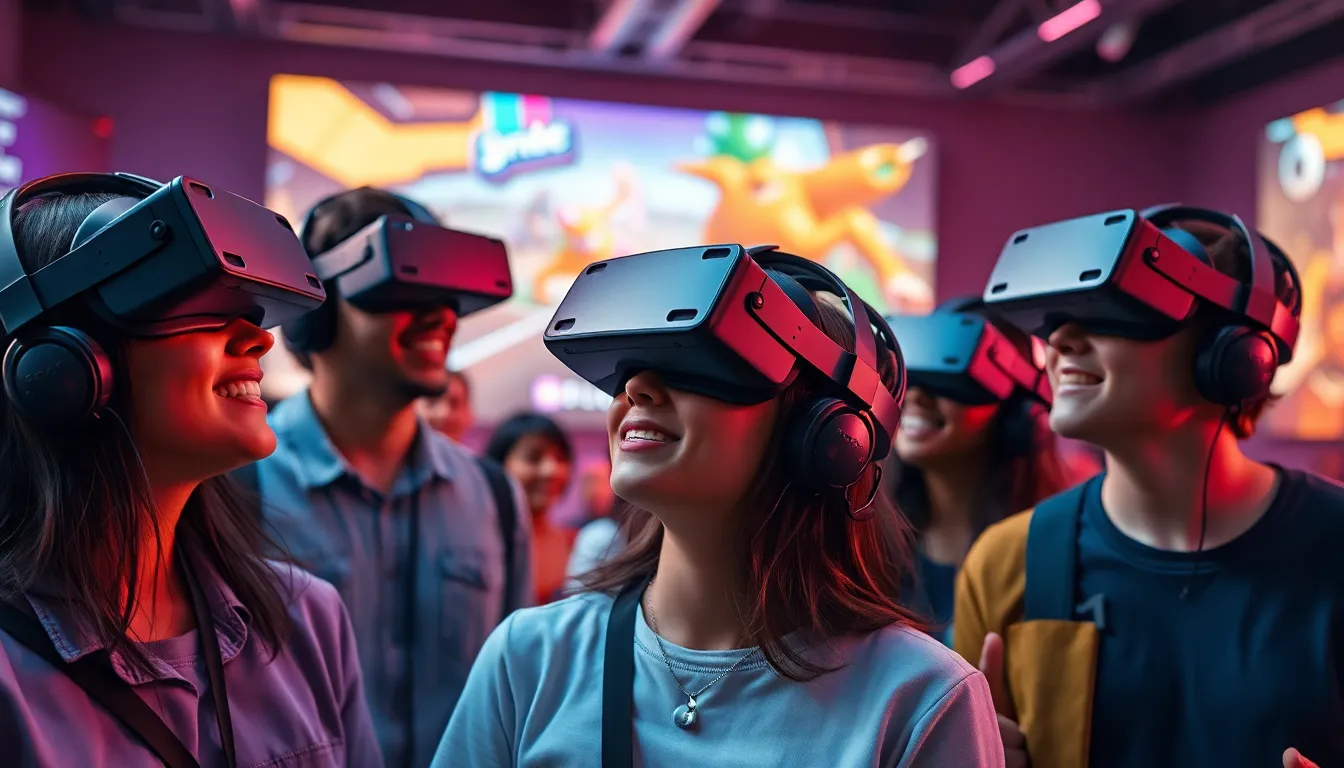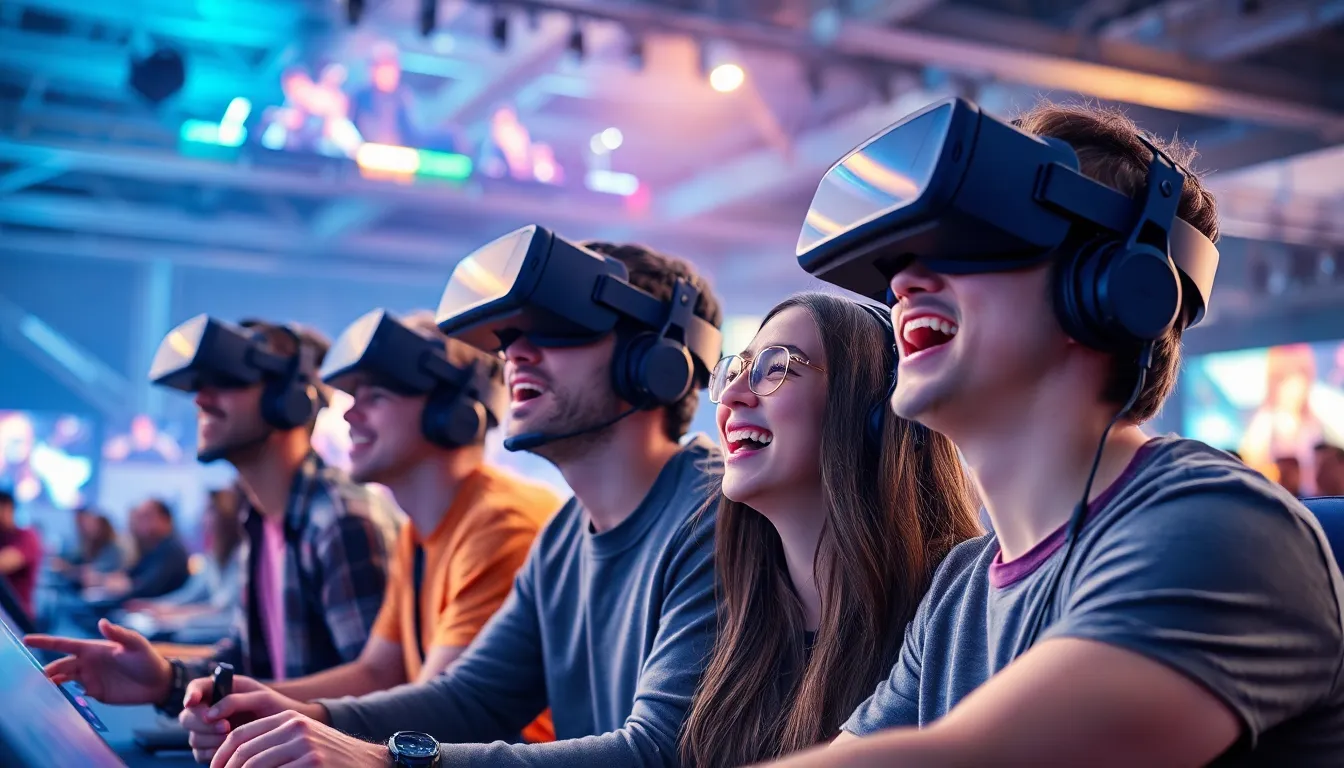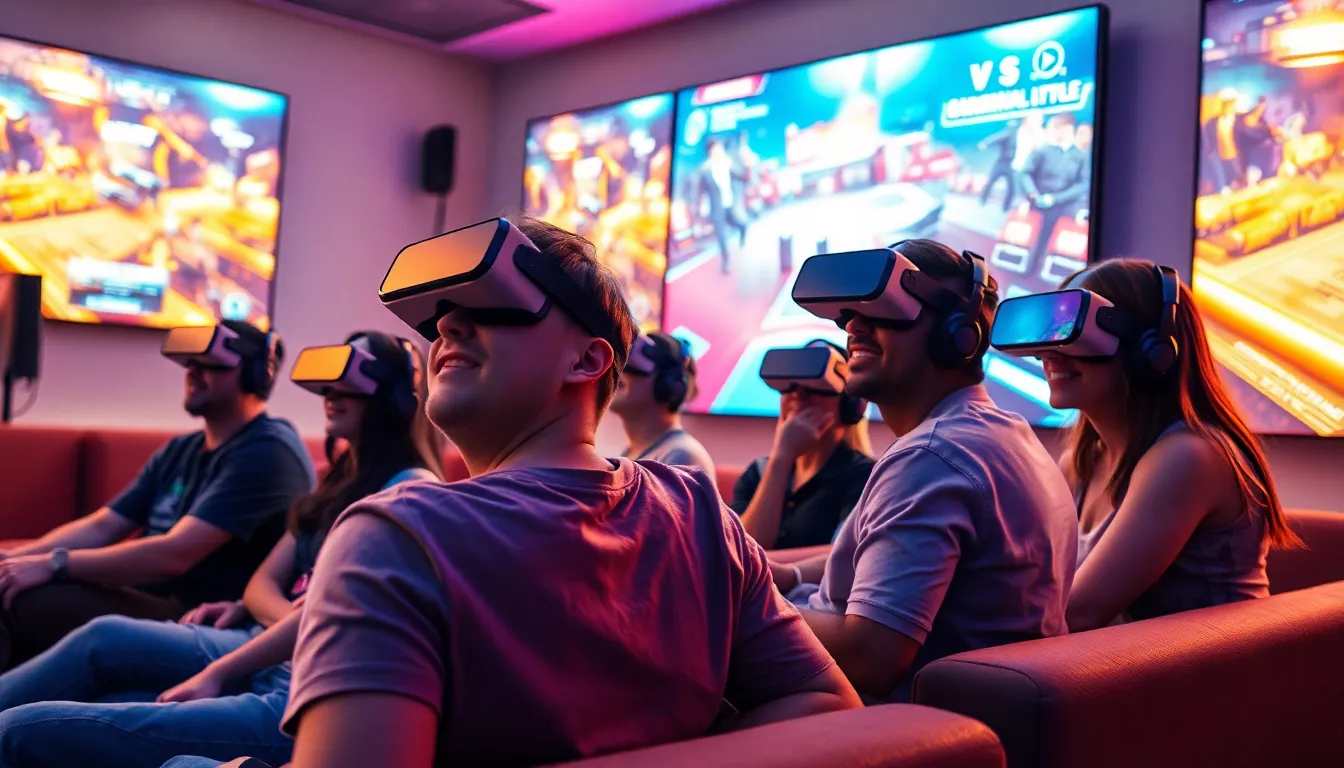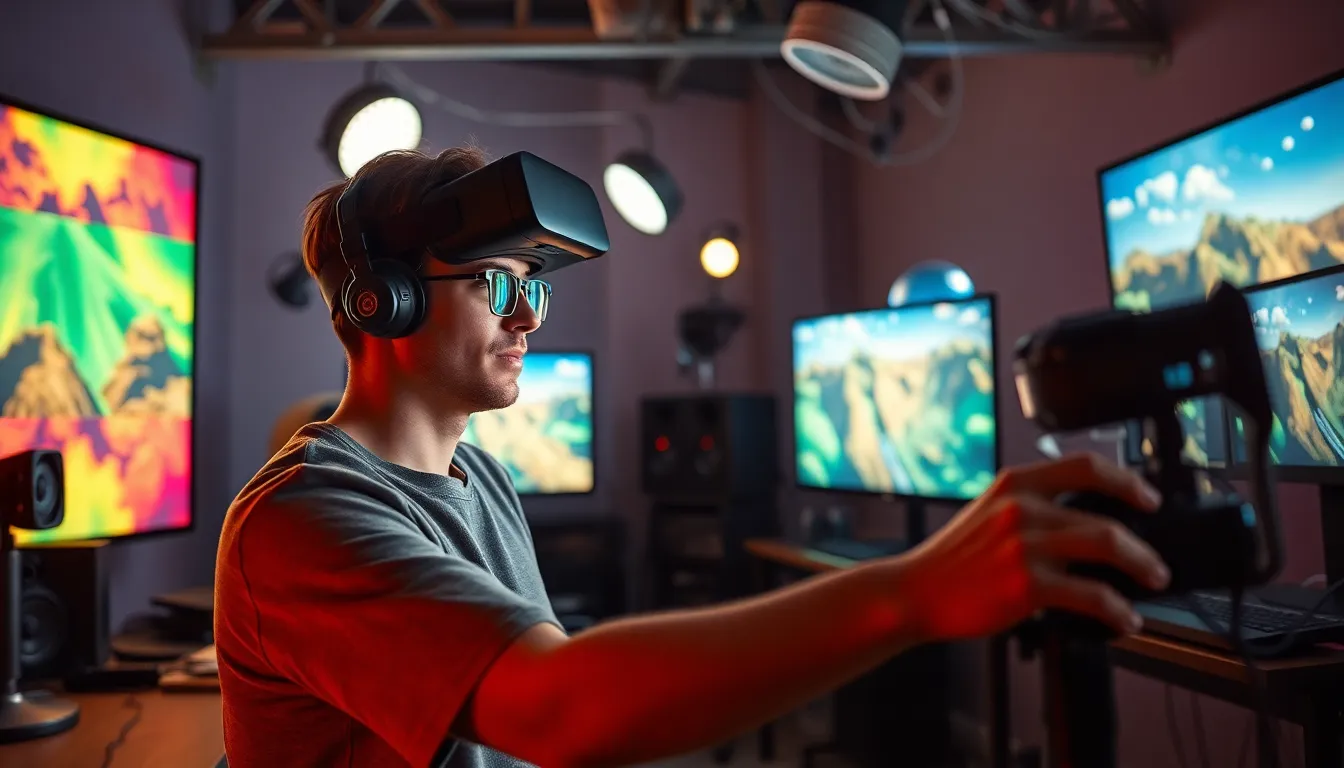Imagine stepping into a virtual world where you can be a fly on the wall—or rather, a pixel in the game. VR spectator modes are revolutionizing how players and fans experience gaming. No longer confined to just playing, spectators can immerse themselves in the action, witnessing epic battles and jaw-dropping stunts from angles they never thought possible. It’s like having a front-row seat to a concert, but instead of a band, it’s your friends battling dragons or racing cars.
Table of Contents
ToggleOverview of VR Spectator Modes
VR spectator modes significantly enhance the gaming experience for both players and viewers. They enable fans to interact with gameplay in real-time, providing a unique view of the action. Spectators observe dynamic scenes from various angles, which creates an immersive environment similar to attending a live event.
Technological advancements in VR allow for multiple modes of viewing. Some platforms offer a first-person perspective from the player’s viewpoint, while others provide a bird’s-eye view of the entire battlefield. This variety accommodates different preferences among spectators.
Engagement levels increase as viewers can participate in events rather than watching passively. Some modes incorporate features like chat functions, letting spectators communicate with each other and the players. Enhanced connectivity keeps viewers engaged during long gameplay sessions.
Major titles in the industry have already adopted VR spectator modes. Games like Half-Life: Alyx and VRChat set standards, combining thrilling gameplay with immersive viewing options. Developers continue to explore innovative approaches to expand spectator interactions.
Popularity surges as VR spectator modes breed new opportunities for community building. Online tournaments draw significant attention, as fans can follow their favorite teams in real-time. Enhanced social experiences create an inclusive atmosphere for viewers.
As technology evolves, the future of VR spectator modes looks promising. New features, including augmented reality enhancements, will likely shape how fans experience games. More immersive technology opens doors for unprecedented viewer engagement in the gaming landscape.
Benefits of VR Spectator Modes


VR spectator modes offer numerous benefits that enhance the gaming experience for both players and viewers. These features create opportunities for deeper engagement and interaction.
Enhanced Immersion
Immersive experiences capture the attention of spectators. Viewers can enter virtual environments, feeling as if they’re part of the action rather than mere observers. Different viewpoints, such as first-person and bird’s-eye perspectives, allow fans to enjoy gameplay in unique ways. Real-time gameplay streaming promotes a greater sense of presence and excitement. These immersive settings simulate being at a live event, making the viewer’s experience more enjoyable and memorable.
Social Interaction Opportunities
Social interaction opportunities thrive within VR spectator modes. Fans can connect and communicate in virtual spaces, sharing reactions during exciting moments. In-game chat functions facilitate discussions, making viewers feel part of a community. Spectators can cheer on teams and celebrate victories together, enhancing camaraderie among fans. With online tournaments, VR modes allow followers to support their favorite teams in real time, fostering a more connected fanbase. These interactive features contribute to the growing appeal of VR spectator modes in the gaming landscape.
Popular VR Spectator Modes in Gaming
VR spectator modes are rapidly transforming the gaming landscape by offering dynamic viewing experiences. Players and fans can now engage with gameplay from multiple immersive perspectives.
Platform-Specific Features
Major gaming platforms enhance spectator experiences with tailored features. Oculus supports interactive seating arrangements that allow viewers to position themselves anywhere in virtual arenas. PlayStation VR takes spectator engagement a step further by integrating social interaction tools, creating live chat rooms within games. Steam VR also offers configurable viewing angles, enabling fans to customize their viewpoint during live events. Each platform prioritizes seamless performance to ensure fans maintain an immersive experience throughout.
Game-Specific Implementations
Various titles showcase unique implementations of VR spectator modes. In “Half-Life: Alyx,” spectators navigate environments alongside players, experiencing encounters up close. “Pop One” lets viewers actively participate by joining as virtual avatars in the gameplay, enhancing active engagement. Meanwhile, “VRChat” leverages user-created worlds, allowing fans to create their own spectator environments tailored to specific events. These game-specific modes emphasize interaction and presence, making the viewer experience integral to gameplay events.
Future Trends in VR Spectator Modes
Anticipated trends in VR spectator modes reveal a path toward more immersive and interactive experiences. Innovations in technology drive these changes, focusing on enhancing viewer engagement and community interaction.
Technological Advancements
Emerging technologies push the boundaries of VR spectator modes. Developers explore improved graphical fidelity and enhanced audio experiences to create lifelike environments. Furthermore, artificial intelligence algorithms enable personalized viewing experiences tailored to individual preferences. Meanwhile, cloud computing facilitates real-time streaming of high-quality gameplay, ensuring smooth interactions. Virtual and augmented reality integration stands out as key, merging digital elements with the real world, opening new avenues for immersive viewing.
Community Engagement
Increasing focus on community engagement fosters stronger connections among spectators. Platforms are introducing features like interactive polls and reaction emojis, enabling viewers to influence in-game experiences. Real-time chat capabilities allow fans to communicate instantly, enhancing shared experiences during events. Collaborative viewing experiences encourage spectators to gather virtually, creating a sense of camaraderie. Social media integration also amplifies community interaction, as fans share highlights and memorable moments from live events. With these developments, VR spectator modes increasingly serve not just as viewing tools but as platforms for community building.
VR spectator modes are reshaping the landscape of gaming engagement. By offering immersive experiences that allow fans to feel part of the action, these modes enhance both the excitement and social interaction within gaming communities. As technology continues to evolve, the potential for more personalized and interactive viewing experiences grows.
With features that promote real-time communication and collaboration, VR spectator modes are not just about watching games; they’re about building connections among fans. This evolution is paving the way for a future where spectators can engage in ways previously thought impossible, ensuring that the thrill of gaming extends far beyond the screen.



